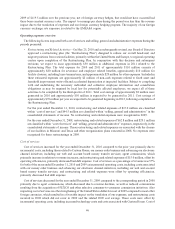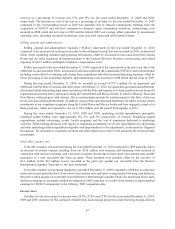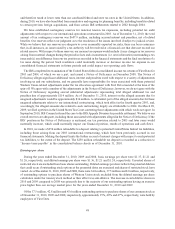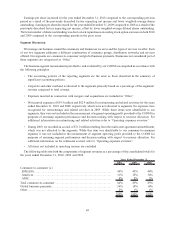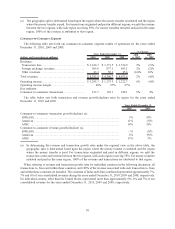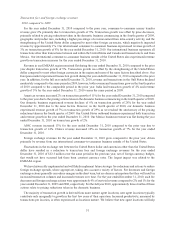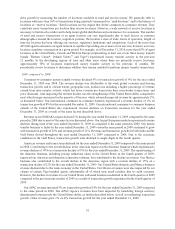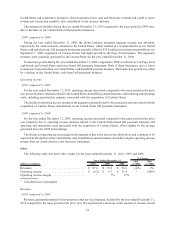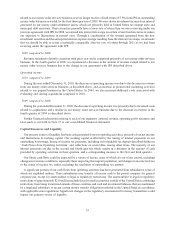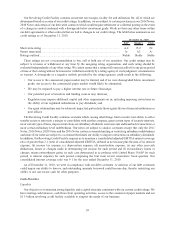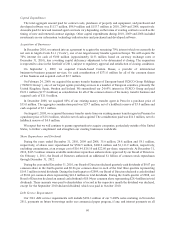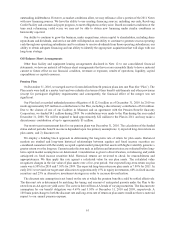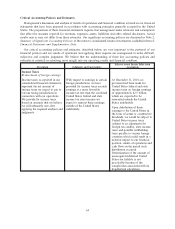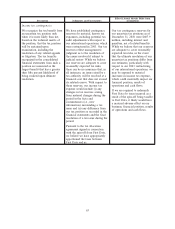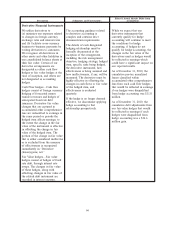Western Union 2010 Annual Report Download - page 58
Download and view the complete annual report
Please find page 58 of the 2010 Western Union annual report below. You can navigate through the pages in the report by either clicking on the pages listed below, or by using the keyword search tool below to find specific information within the annual report.We believe we have adequate liquidity to meet our business needs, including the pending acquisition of Angelo
Costa S.r.l., dividends, and share repurchases, through our existing cash balances and our ability to generate cash
flows through operations. In addition, we have capacity to borrow up to $1.5 billion in the aggregate under our
commercial paper program and revolving credit facility, which were not drawn on as of and during the year ended
December 31, 2010. The revolving credit facility expires in September 2012.
Cash and Investment Securities
As of December 31, 2010, we had cash and cash equivalents of $2.2 billion, of which $1.3 billion was held by our
foreign entities. Our ongoing cash management strategies to fund our business needs could cause United States and
foreign cash balances to fluctuate.
Repatriating foreign funds to the United States would, in many cases, result in significant tax obligations because
most of these funds have been taxed at relatively low foreign tax rates compared to our combined federal and state
tax rate in the United States. We expect to use foreign funds to expand and fund our international operations and to
acquire businesses internationally.
In many cases, we receive funds from money transfers and certain other payment services before we settle the
payment of those transactions. These funds, referred to as “settlement assets” on our consolidated balance sheets,
are not used to support our operations. However, we earn income from investing these funds. We maintain a portion
of these settlement assets in highly liquid investments, classified as “cash and cash equivalents” within “settlement
assets,” to fund settlement obligations.
Investment securities, classified within settlement assets, were $1.4 billion as of December 31, 2010.
Substantially all of these investments are state and municipal debt securities. Most state regulators in the
United States require us to maintain specific high-quality, investment grade securities and such investments are
intended to secure relevant outstanding settlement obligations in accordance with applicable regulations.
Substantially all of our investment securities in the Consolidated Balance Sheets are classified as
available-for-sale and recorded at fair value. Under the Payment Services Directive (“PSD”) in the European
Union, we expect to have a similar portfolio of investment securities, which we will manage in a similar manner and
under similar guidelines as our current portfolio.
Investment securities are exposed to market risk due to changes in interest rates and credit risk. We regularly
monitor credit risk and attempt to mitigate our exposure by making high quality investments, including diversifying
our investment portfolio. As of December 31, 2010, the majority of our investment securities had credit ratings of
“AA-” or better from a major credit rating agency. Our investment securities are also actively managed with respect
to concentration. As of December 31, 2010, all investments with a single issuer and each individual security was less
than 10% of our investment securities portfolio.
Cash Flows from Operating Activities
During the years ended December 31, 2010, 2009 and 2008, cash provided by operating activities was
$994.4 million, $1,218.1 million and $1,253.9 million, respectively. Cash flows provided by operating
activities decreased from 2009 to 2010, primarily due to a $250.0 million refundable tax deposit made relating
to potential United States federal tax liabilities, including those arising from our 2003 international restructuring,
which have been previously accrued in our financial statements. Making the deposit limits the further accrual of
interest charges with respect to such potential tax liabilities, to the extent of the deposit. Cash flows provided by
operating activities decreased from 2008 to 2009 due to lower net income, offset by working capital fluctuations in
2009, including the settlement accrual and timing of tax payments.
56


